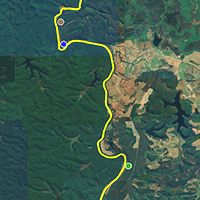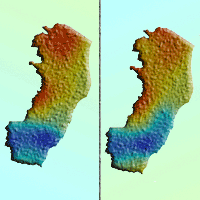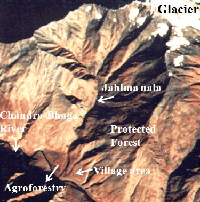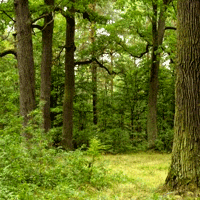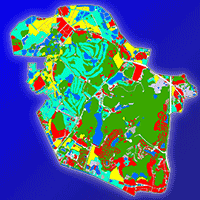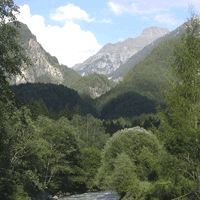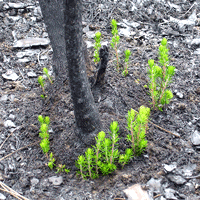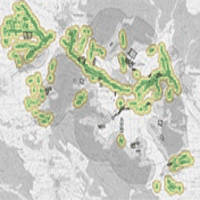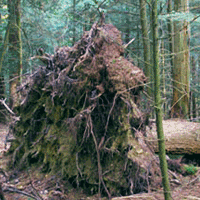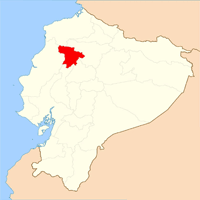
Soil bio-engineering for watershed management and disaster mitigation in Ecuador: a short-term species suitability test
iForest - Biogeosciences and Forestry, Volume 6, Issue 2, Pages 95-99 (2013)
doi: https://doi.org/10.3832/ifor0636-006
Published: Feb 07, 2013 - Copyright © 2013 SISEF
Technical Reports
Abstract
This paper reports a soil bio-engineering technical assessment program conducted in the Santo Domingo, Ecuador region. Autochthonous plant species survivorship and vegetative growth was evaluated in a short-term palisade experimental regime. Among the four species evaluated, Brugmansia versicolor, Malvaviscus penduliflorus, and Trichanthera gigantea performed well, evidenced by > 70% survivorship, however Euphorbia cotinifolia exhibited increased mortality (59%). Significant differences and notable variability in terminal shoot length and stem diameter among species indicated further study is warranted in growth parameters.
Keywords
Soil bio-engineering, Ecuador, Watershed Management, Disaster Mitigation
Authors’ Info
Authors’ address
Corresponding author
Paper Info
Citation
Preti F, Petrone A (2013). Soil bio-engineering for watershed management and disaster mitigation in Ecuador: a short-term species suitability test. iForest 6: 95-99. - doi: 10.3832/ifor0636-006
Academic Editor
Roberto Tognetti
Paper history
Received: Aug 08, 2012
Accepted: Oct 19, 2012
First online: Feb 07, 2013
Publication Date: Apr 02, 2013
Publication Time: 3.70 months
Copyright Information
© SISEF - The Italian Society of Silviculture and Forest Ecology 2013
Open Access
This article is distributed under the terms of the Creative Commons Attribution-Non Commercial 4.0 International (https://creativecommons.org/licenses/by-nc/4.0/), which permits unrestricted use, distribution, and reproduction in any medium, provided you give appropriate credit to the original author(s) and the source, provide a link to the Creative Commons license, and indicate if changes were made.
Web Metrics
Breakdown by View Type
Article Usage
Total Article Views: 55824
(from publication date up to now)
Breakdown by View Type
HTML Page Views: 46254
Abstract Page Views: 2873
PDF Downloads: 4998
Citation/Reference Downloads: 27
XML Downloads: 1672
Web Metrics
Days since publication: 4692
Overall contacts: 55824
Avg. contacts per week: 83.28
Citation Metrics
Article Citations
Article citations are based on data periodically collected from the Clarivate Web of Science web site
(last update: Mar 2025)
Total number of cites (since 2013): 7
Average cites per year: 0.54
Publication Metrics
by Dimensions ©
Articles citing this article
List of the papers citing this article based on CrossRef Cited-by.
References
How to select the appropriate techniques and suitable plant species for soil bio-engineering works? An application example from Nepal. Geophysical Research Abstracts, vol. 13, EGU2011-11381, EGU General Assembly.
Gscholar
Forest regeneration manual. Series: Forestry Sciences 36: 440.
Gscholar
Stabilization of gullies with soil - bio-engineering methods in the Alps and in Nepal. In: “Gully erosion under global change” (Li Y, Poisen J, Valentin C eds). Sichuan Science and Technology Press, Chengdu, China, pp. 315-339.
Gscholar
Mitigation of soil erosion hazards through bio-engineering: a case study of Mid-Himalaya, Nepal. In: Proceedings of the “International Conference Eco-Engineering - The use of vegetation to improve slope stability’’, Thessaloniki (Greece) 2004.
Gscholar
Biotechnical and soil bio-engineering slope stabilization. A practical guide for erosion control. John Wiley & Sons Inc., New York, USA, pp. 378.
Gscholar
Material and site controls of stream bank vegetation. Transactions of the ASAE 27: 1829-1835.
Gscholar
Managing landslides in Guatemala, critical issues. In: Proocedings of “The first world landslide Forum”. United Nations University (Tokyo, Japan) 18-21 Nov 2008, Session 03, pp. 45-48.
Gscholar
The analysis of global landslide risk through the creation of a database of worldwide landslide fatalities. In: “Landslide risk management” (Hungr O, Fell R, Couture R, Eberhardt E eds). Balkema, Rotterdam,, the Netherlands, pp. 367-374.
Gscholar
Ingenieria naturalistica en centroamérica. Manuali tecnici per la cooperazione allo sviluppo. Istituto Agronomico per l’Oltremare, Società Editrice Fiorentina, Firenze, Italy, pp. 108. [in Spanish]
Gscholar
Root reinforcement and slope bio-engineering stabilization by Spanish Broom (Spartium junceum L.). HESS 13 (9): 1713-1726.
Gscholar
Monitoring ground bio-engineering stabilization of land-slides in Lazio region (Italy). In: Proceedings of the Conference “Eco- and Ground Bio-Engineering: The Use of Vegetation to Improve Slope Stability” (Stokes A, Spanos I, Norris JE, Cammeraat E eds). Thessaloniki (Greece) 13-17 September 2004. Series “Developments in Plant and Soil Sciences”, vol. 103. Springer, Dordrecht, The Netherlands, pp. 438.
Gscholar
NH10.4/BG2.18/GM4.4/SSS1.12 - Mitigating against natural hazards: biological contribution to sustainable soil bio-engineering in a changing world. In: Proceedings of the “European Geosciences Union General Assembly 2011”. Vienna (Austria) 3-8 Apr 2011.
Online | Gscholar
Root system architecture of woody species important for erosion control in Tigray, Northern Ethiopia. In: Proceedings of the 4 International Symposium on “Dynamics of Physiological Processes in Roots of Woody Plants” (Lukac M ed). Bangkor (UK) 16-20 Sep 2007. University of Wales, UK.
Online | Gscholar
Uso social de la Bioingeniería para el control de la erosión severa. CIPAV-CVC, Quito, Ecuador.
Gscholar
Watershed management field manual: vegetative and soil treatment measures. FAO, Rome, Italy, pp. 61.
Gscholar
Effetti stabilizzanti della vegetazione in opere di ingegneria naturalistica - un caso di studio nelle Alpi svizzere. In: Proceedings of the meeting “Le sistemazioni idraulico-forestali per la difesa del territorio”. Saint Vincent (Aosta, Italy) 27 Oct 2006. Nuova Editoriale Bios., Quaderni di Idronomia Montana, vol. 26.
Gscholar

